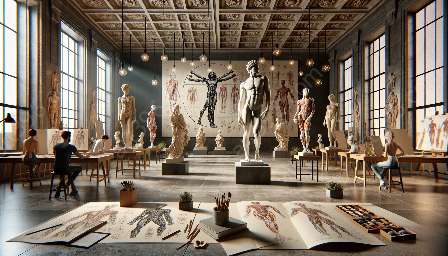Technology is increasingly shaping the way artists approach gesture drawing and anatomy. This fusion of traditional artistic techniques with cutting-edge technology has opened up new possibilities for artists, providing innovative tools and resources to enhance their creative process and skills.
The Impact of Technology on Gesture Drawing and Anatomy
Gesture drawing, a quick and expressive form of drawing that captures the essence of a subject's movement and form, has traditionally been practiced using pen and paper. However, the emergence of digital drawing tablets and software has revolutionized gesture drawing, offering artists a dynamic and versatile way to engage with their subjects.
With the aid of digital tools, artists can now create gesture drawings with greater precision, fluidity, and flexibility. Digital drawing tablets enable artists to directly capture movement and form, with the added ability to easily undo and refine their work. Additionally, advanced software provides features such as layers, which allow artists to break down complex movements and study each component separately, resulting in a deeper understanding of anatomy and gesture.
The Fusion of Technology and Artistic Anatomy
Artistic anatomy, the study of the structure and form of the human body, is essential for artists seeking to accurately depict the human figure. Technology has significantly impacted the way artistic anatomy is studied and applied in gesture drawing.
Digital resources, such as 3D modeling software and anatomy applications, have become valuable tools for artists to explore and visualize the complexities of human anatomy. These tools enable artists to study anatomical structures from various angles, dissect layers of the body, and even simulate movement, offering an immersive and interactive learning experience.
The Evolution of Traditional Practices
While technology has undeniably transformed gesture drawing and artistic anatomy, it has also redefined the traditional art studio. Virtual reality (VR) and augmented reality (AR) platforms have emerged as innovative mediums for artists to immerse themselves in lifelike environments and experiment with gesture drawing and anatomical studies.
Artists can now step into virtual spaces to interact with digital models, enabling them to practice gesture drawing and explore anatomical details in a three-dimensional, interactive setting. These advancements have expanded the possibilities for artists to refine their skills and push the boundaries of traditional practices.
The Future of Digital Art and Gesture Drawing
As technology continues to advance, the future of digital art and gesture drawing holds tremendous promise. Augmented by artificial intelligence (AI) and machine learning, digital tools will evolve to offer even greater assistance to artists, from generating anatomy references to providing real-time feedback on gesture drawings.
Moreover, the integration of haptic technology, which simulates the sense of touch, will further enhance the tactile experience of digital drawing, bridging the gap between traditional and digital artistic practices.
In conclusion, the marriage of technology and gesture drawing has ushered in a new era of artistic exploration and expression. By embracing digital tools and resources, artists are not only elevating their technical capabilities but also broadening the boundaries of creativity and imagination.

